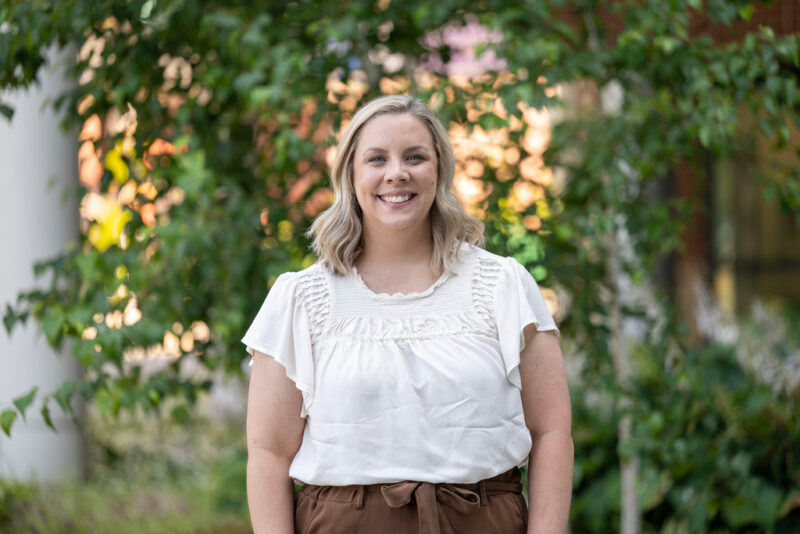
Audrey Vaughn, Akron Children’s Pediatrics nurse, recently demonstrated that you don’t have to be in the physical presence of a patient to offer lifesaving care.
Patient safety may feel like an issue that’s restricted to our patient care settings, but the reality is it extends far beyond. This poignant truth struck home for one Akron Children’s nurse during a routine phone call that took an unexpected turn, transforming into a life-or-death situation and serving as a reminder that patient safety transcends physical location.
“I made a non-urgent phone call to a mom regarding a concern she had about her 13-month-old daughter,” said Audrey Vaughn, a nurse at Akron Children’s Pediatrics Warren. “She was talking normally for the first 1-2 minutes of the conversation, and then suddenly she sounded startled as if something was wrong. Within a few seconds, I heard the phone drop, and I started to call out with no answer.
“I sensed that something was wrong because of the change in her voice,” she added. “She sounded so startled, which made me stop and listen.”
When Audrey heard what she thought was seizure activity and the mom remained unresponsive, she had a coworker call 9-1-1 while she stayed on the call.
“I continued calling out while my coworker called the patient’s father and let him know we were concerned that something was wrong, and that police and EMS were on the way to the home,” she said. “I waited on the call until I could hear someone enter the home and start rendering aid.”
As a triage nurse, Audrey is used to occasional dropped calls and hang-ups, but she sensed that was not the case in this instance.
“As a nurse in the ambulatory setting, we spend a great deal of time on the phone. Trusting our instincts and using listening skills are vital to the care we provide,” she said. “We don’t get the privilege of an in-person visit, so we depend on information provided by the person on the other end of the telephone.
“This job has highlighted and developed my ability to be a good listener with empathy and compassion,” she added. “Taking a moment to listen, review and make a decision can be life changing.”
Not only did Audrey’s actions represent the stop and resolve principle that’s part of the hospital’s broader Safer4All employee and patient safety campaign, but she also displayed the core of what it means to offer family-centered care.
“Keeping families whole is the ultimate goal of patient- and family-centered care,” she said. “It means partnering together as a team with the patient, family and multidisciplinary members to provide the best care possible, taking into account the family dynamics, culture and beliefs.”
Audrey later learned the mom was diagnosed with a seizure disorder and is now doing well.
“I am humbled by the family calling me a hero,” Audrey said. “Knowing that mom is healthy and able to care for her child is all of the appreciation or recognition that I need.”











